- connecting our global business alumni network
12 September 2022
Leap of Faith – from Pointe Shoes to Podiatry
Combining her experience as a young ballet dancer and 20 years running a successful podiatry practice, UniSA alumna Angela Ayres is taking steps to better care for our feet … and the planet.
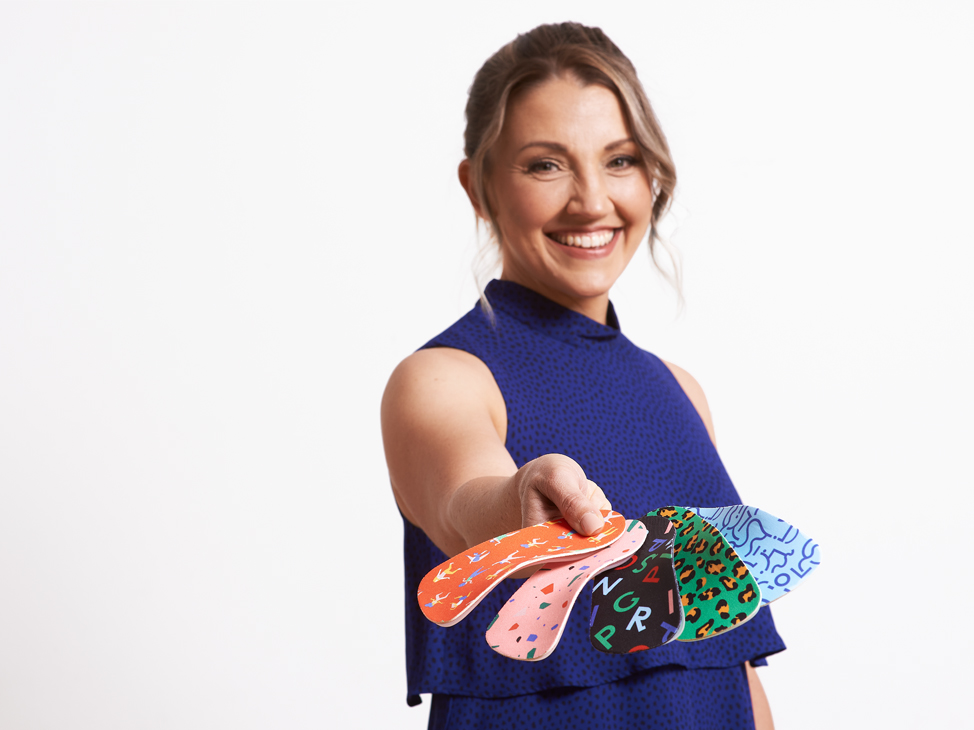
Angela Ayres
CEO, Founder and Director, Spriing
Bachelor of Podiatry
It’s one thing to have talent and a dream to perform, but not all of us have the inner strength to make the necessary sacrifices. At the tender age of 13 Angela Barker, struggling to balance her academic achievements and love of dance, left formal schooling to focus on ballet.
At 15 she was accepted into a performing art school in Melbourne. It was a tough gig – living independently in a residential college, removed from her support network and essentially fending for herself. “It teaches you a lot about what you’re capable of and what’s important to you … how to prioritise,” says Angela.
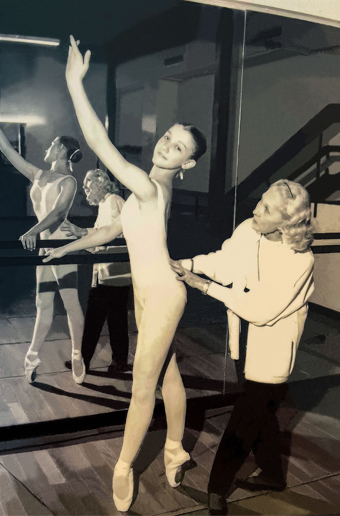
But the drive and discipline required of ballet dancers was perhaps an advantage. “It’s gruelling, punishing … The overhaul of the elite sporting industry has shown what some young people went through. It’s good that dance has progressed and there’s now more body acceptance and appreciation for everyone’s strengths. A muscular dancer can jump and do big explosive leaps whereas a skinny, long-legged dancer is better at extensions and slow movement.”
Angela persevered, working in hospitality to ensure she could replace the pointe shoes she rapidly destroyed due to her hypermobile feet. All that hard work paid off, with a highlight being part of the group that won a competition at the Sydney Opera House and trained at the Sydney Dance Company studios. She also made an appearance on Frankie J Holden’s In Melbourne Tonight dressed in knee high boots and a white shirt à la Risky Business. The “super conservative” ballet dancer’s greatest fear that night was that her father would see the performance.
By 19 Angela came to the realisation that, in a world before Tik Tok videos, she lacked a network of contacts which made securing auditions and roles a constant struggle. She was also, unlike some of her peers, not prepared to live on a diet of cigarettes, chocolate bars and soft drink to achieve an unhealthy weight to achieve her “potential” – a word that makes Angela cringe. So, she returned to Adelaide. “I can happily say there wasn’t a single thing that I could have done better or differently – my children wouldn’t believe some of the things I could do!”
With characteristic determination, Angela completed Years 11 and 12 and was accepted into the University of South Australia. It’s no surprise that with her inside knowledge of the importance of feet, she chose to study podiatry, maintaining a distinction average. Angela fondly remembers her Uni days and treasures the relationships formed at that time, especially meeting her future husband, David Ayres, a physiotherapist. “University gave me everything – my career, my husband, lifelong friends. And it’s highly likely my children will go there too.”
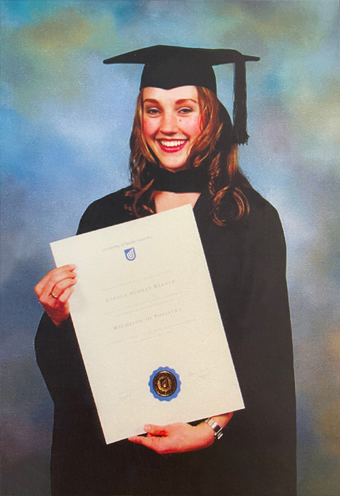
On graduation in 2002, Angela went to work with podiatrist Simon Bartold and was gobsmacked by the constant stream of footballers, golfers, international cricketers and other athletes who chose to see him for treatment in Adelaide. “I was in absolute awe, and always thought ‘what a remarkable human’. He's internationally renowned, with a massive knowledge. I was just so grateful to be able to observe what he did.”
Angela later moved into a mixed medical practice for a few years and eventually set up her own which provided her and David with the flexibility to raise three children. “As a podiatrist you become familiar with what people are doing wrong – people are coming to see you as they’ve already got a problem and often these problems are preventable,” says Angela. “I also know how much a patient is going to take on when they leave an appointment. People have complex lives – they have things they have to do and things they want to do and some of these are non-negotiable.
“I think a lot of practitioners, whether it's physio, podiatry, or whatever, don't put their patient’s whole life into the equation. And if you're just prescribing something or telling someone to do something that doesn't fit into their life, then they’ve essentially wasted their money with you.”
A 20-something woman with family history of bunions is not going to want to give up her heels, just as teenagers all want the same trainer or footy boot as their tribe. And it’s all linked to broader well-being issues. Removing obstacles such as sore feet or “dicky” knees keeps us active and mobile and improves our physical and mental health.
“There's no proactive messaging out there about the fact that, actually, people need to get to know their feet – but it's just such an unsexy topic. Feet are not yucky – they are very, very highly tuned functional tools and if we don’t look after them, they can’t support our body weight and get us around for the rest of our lives. Feet don't just hold your body weight all day, they absorb shock. They save your knees, hips and your back; they cushion your joints.”
It makes sense that dealing with these issues in the early stages will prevent complications as we age and help the younger generation avoid them altogether. “If we actually had stats on the impact of foot injuries in the workforce, it would be huge.”
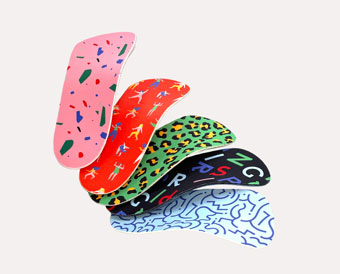
Unsatisfied with the results she achieved with custom-made orthotics and taking advantage of new technologies, Angela ventured into providing a more bespoke product for her patients with great results. But she was uncomfortable that these were often out of reach for some people. “I thought, there are so many people who can't afford this. There are things I know that can help people and I reckon we can use some of these and boil them down into a design that is mass produced and at an affordable price point”.
And so Spriing came into being. In 2020 Angela sold her practice to free up both her time and finances to focus on her new business. Let’s just say “there are no bad mistakes, there are just learnings.”
While in private practice Angela became aware that while not everyone could afford the same level of care, they all shared the same problem – finding appealing footwear that would accommodate their orthotics. With the support of her “tech wizard” husband, she normalised the data collected over many years of capturing digital scans, literally thousands of them, to create an orthotic with an interchangeable cover made to fit most shoes.
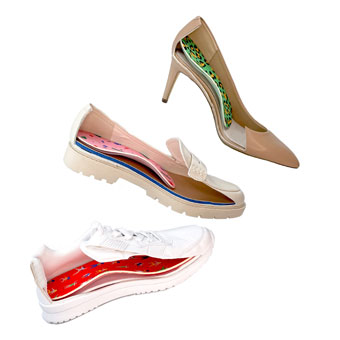
effective inner sole that fits a wide range of footwear
“Spriings are a combination of designing for a foot, but also designing for what they're going into. Feet obviously can be a lot wider than our product but the shoes they're going into are not. I think that's where orthotics often failed people in the past – there's an expectation that you have to buy specialty shoes that will fit the width.”
Another driver for Angela is sustainability. With removable, washable covers, Spriing orthotic shells last a lot longer, are more hygienic, and those expensive, uncomfortable shoes, that may sit in the back of the wardrobe (or worse still, go to landfill), are now wearable. The packaging is made from recycled plastic bottles, and mail orders arrive in a custom designed compostable bag made from corn starch.
“I tried to make Spriings so that they're comfortable, they're safe, they are supportive and flexible. They work in almost every kind of shoe.” Well, maybe not flip flops or killer heels – not yet anyway.
You can find out more on the Spriing website.



